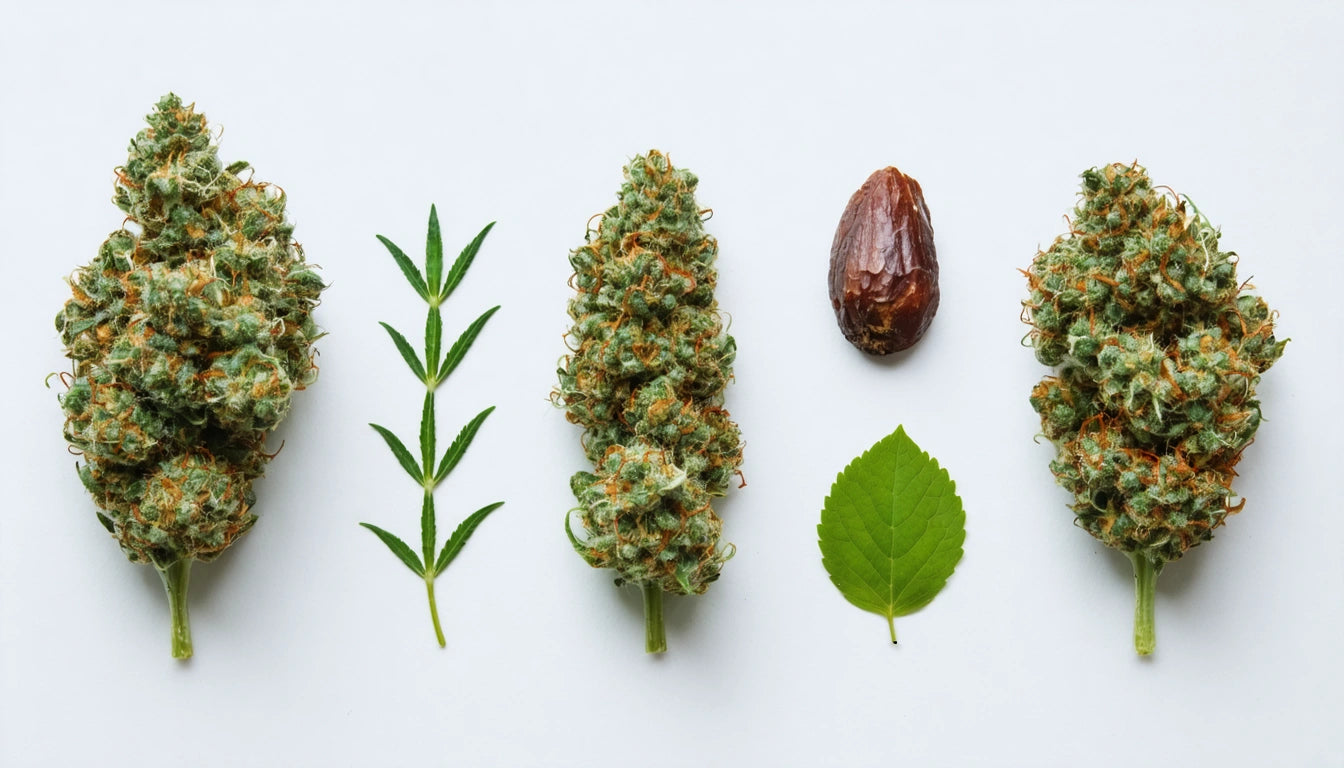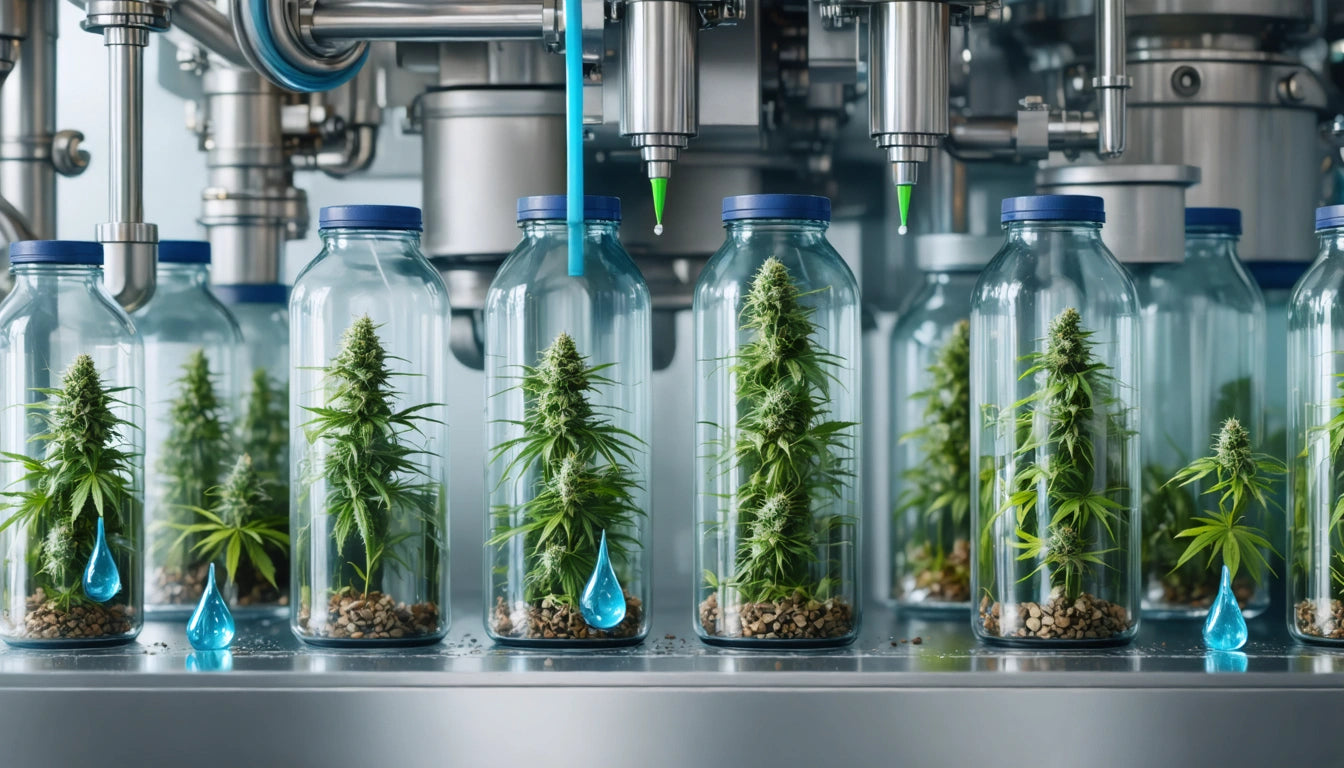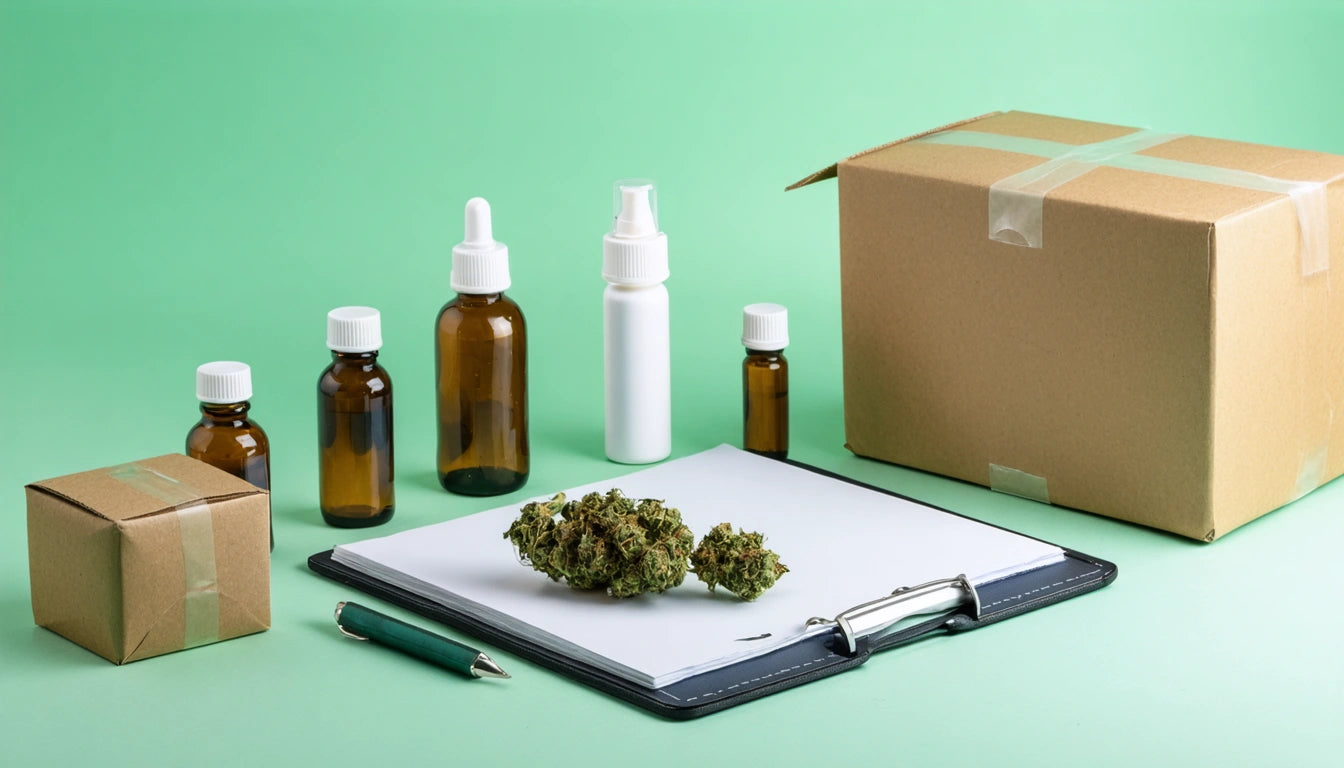Table of Contents
Cannabis flower quality varies significantly across products, with differences that impact both experience and value. Learning to evaluate flower through sensory assessment helps consumers make informed choices and avoid disappointing purchases. This guide explores the key indicators of premium cannabis and provides practical evaluation techniques.
Visual Indicators of Quality Cannabis
The visual appearance of cannabis flower offers immediate clues about its quality and potency. Premium flower typically displays vibrant colors ranging from deep greens to purples, blues, or oranges, depending on the strain. These colors should appear natural rather than artificially enhanced.
Trichome Coverage
High-quality flower features abundant trichomes, the tiny crystal-like structures containing cannabinoids and terpenes. These appear as a frosty coating that sparkles under light. Dense, intact trichomes indicate careful handling and proper curing, while their absence suggests poor quality or excessive handling.
Bud Structure
Well-cultivated cannabis presents dense, compact buds that maintain their structure when gently squeezed. Avoid loose, airy buds that easily fall apart, as these often indicate suboptimal growing conditions or premature harvesting. Each strain has characteristic bud formations, but all quality flower should appear well-formed and intact.
The Importance of Aroma in Flower Evaluation
Aroma provides crucial information about terpene content and freshness. Quality cannabis produces a strong, distinctive smell that varies by strain but should always be vibrant and complex.
Terpene Profiles
Different strains feature unique terpene combinations that create their signature scents. Common profiles include:
- Citrus and fruity (limonene, terpinolene)
- Pine and earthy (pinene, humulene)
- Spicy or peppery (caryophyllene)
- Sweet and floral (linalool)
A rich, multidimensional aroma indicates well-preserved terpenes and proper curing. If you're unsure about identifying specific scents, asking your budtender can provide valuable guidance on what to expect from different varieties.
Tactile Assessment: Feel and Structure
The physical characteristics of flower reveal much about its cultivation and processing quality. When permitted to handle the product, pay attention to these tactile indicators.
Moisture Content
Properly cured cannabis should feel slightly springy when gently squeezed, returning to its original shape afterward. Overly dry flower crumbles easily and indicates poor storage or aged product. Conversely, excessive moisture suggests improper curing and increases the risk of mold development.
Stem Snap
Quality flower stems should snap cleanly rather than bend. A clean break indicates optimal moisture content, while bendable stems suggest either excessive moisture or insufficient curing. This simple test provides insight into the overall freshness and storage conditions.
Red Flags and Warning Signs
Being able to identify problematic cannabis helps consumers avoid poor-quality products. Watch for these warning signs:
Contaminants and Pests
Carefully inspect for signs of mold, which appears as white powdery or fuzzy patches distinct from trichomes. Also look for seeds, stems, and insect damage, all indicators of lower quality. Quality producers implement rigorous testing protocols to prevent contamination, as detailed on cannabis labels.
Unusual Coloration
Unnatural colors or uniformly dark buds may indicate improper drying, freezing damage, or artificial coloring. Quality cannabis displays natural color variations throughout the bud structure.
Leveraging Dispensary Resources
Dispensaries offer valuable resources for evaluating cannabis quality before purchase. Knowledgeable staff can provide insights into cultivation methods, curing processes, and expected effects.
Display Samples and Magnification
Many dispensaries offer magnifying glasses to examine display samples. This allows for closer inspection of trichomes and potential contaminants. Quality-focused dispensaries typically provide well-lit examination areas and staff trained to discuss product characteristics.
Lab Testing Information
Reputable dispensaries provide access to lab testing results for their products. These reports verify cannabinoid content and confirm the absence of pesticides, heavy metals, and microbial contaminants. Understanding how to interpret this information helps in making quality comparisons between products.
Making Informed Purchasing Decisions
Quality assessment directly impacts the value received from cannabis purchases. Premium flower commands higher prices but delivers superior experiences through better flavor, more consistent effects, and smoother consumption.
When evaluating cannabis, consider your personal preferences alongside objective quality indicators. Some consumers prioritize specific terpene profiles, while others focus on potency or appearance. Tracking your experiences with different products helps refine your personal quality criteria over time.
For newer consumers or those exploring unfamiliar strains, start with smaller quantities to test quality before committing to larger purchases. This approach allows for personal assessment without significant investment in potentially disappointing products.
By developing sensory evaluation skills and understanding quality indicators, consumers can consistently identify premium cannabis flower that delivers desired effects and experiences. This knowledge transforms the purchasing process from guesswork into an informed decision based on observable characteristics and industry standards.











Leave a comment
All comments are moderated before being published.
This site is protected by hCaptcha and the hCaptcha Privacy Policy and Terms of Service apply.